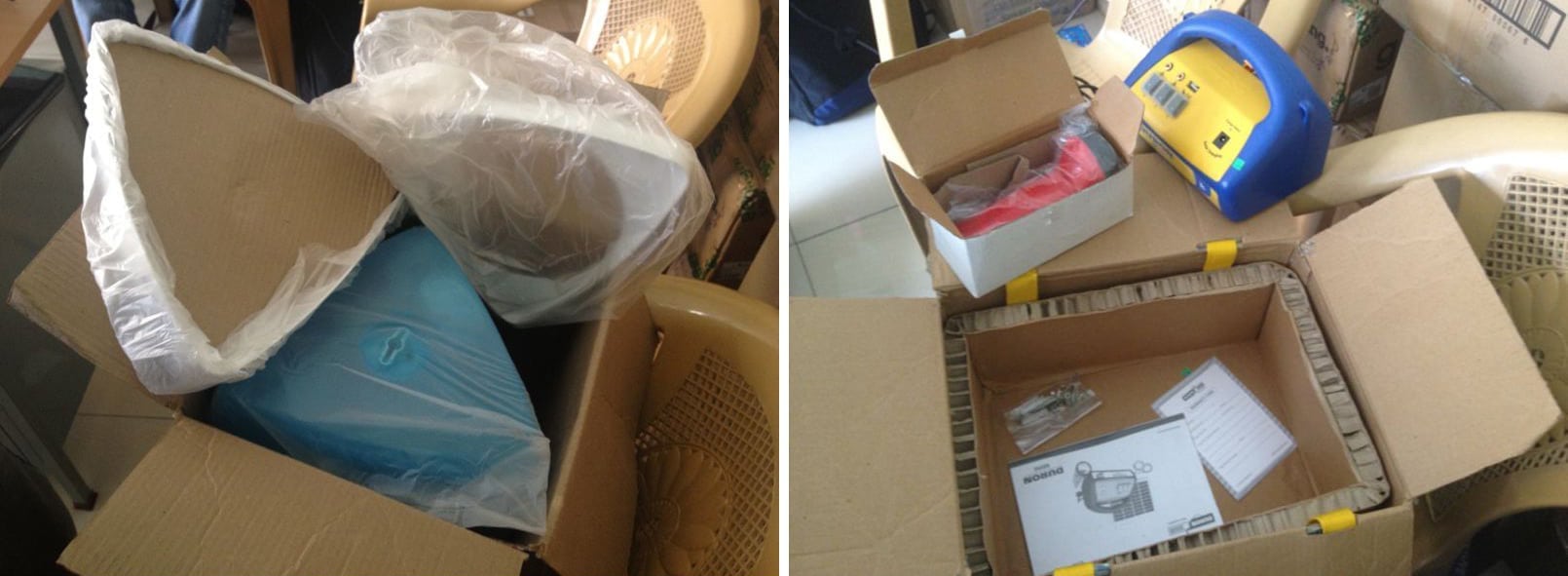
Comparing two oil presses: Kickstart’s oil press (above right) is standardized for wide distribution and costs a fraction of ATI’s oil press (below right), which was tailored to particular markets.
Welcome to The Big Design Questions, a weekly series that tests and challenges design principles for creating appropriate technology outlined in our Introduction to Engineering for Global Development.
Khanjan Mehta, a contributing editor at E4C and head of the Humanitarian Engineering and Social Entrepreneurship (HESE) program at Penn State, and his students first posed this week’s question in a paper published in the IEEE Technology and Society Magazine. Khanjan offers his thoughts below and we’d like to put the question to the entire community if you would please share your comments at the end.
Technologies mentioned here and many more besides are available for review and comparison in our Solutions Library.
Should we make products that are localized or standardized?
Ventures that create technologies that meet basic needs in developing countries have a crucial design decision to make: Whether they should standardize or localize a particular product. Standardization means delivering the same product to everyone, regardless of the differences in each cultural and geographical market. Localization, on the other hand, treats each community as a “cultural being” and designs for specific needs and behaviors.
Standardization engenders reliability, quality control, and cost-effectiveness. So, it enables greater customer access. Localization ensures that the needs and preferences of specific communities are met. However, it probably requires dozens of variations, which means higher upfront design costs and higher prices for the consumers. That problem could ultimately render the product unaffordable.
At the height of the appropriate technology movement in the 1980s, ATI developed a sunflower oil pressdesigned specifically for small communities. The press was efficient and fit perfectly in the community. However, at a cost of nearly $200, it was too expensive for the target users. Nearly a decade later, KickStart developed a cooking oil press that costs less than $30 and has helped over a million people. Their success can be attributed to standardizing and producing one specific product instead of several versions attuned to local markets.
The answer is complicated, however. Even if a venture accepts the benefits of standardization at the manufacturing level, implementation may not be possible without localization. For example, while the design of a basic mudbrick press might be standardized, the entire mudbrick building system must adapt to dissimilar climates and soils in different parts of the world. Localization in high rainfall areas might involve stabilizing the bricks with a mud-cement mixture, despite the additional cost in terms of press maintenance and design. In this case, the product (press) might be standardized while the educational regimen is customized to the specific context. Clearly, there are shades of gray within the standardization versus localization decision for technology ventures, but an ideal medium is often possible.
What do you think?

